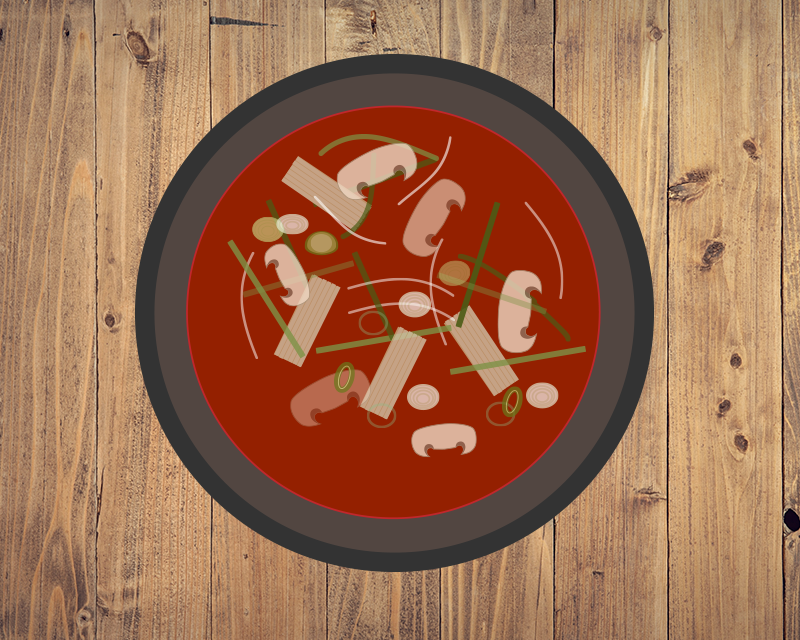Rating: ★★★★★
Price: $
Andrea: 🙂
Youngseo: 🙂
Amongst the large stores and restaurants, La Gong Bang stood distinctively as the long line of people in front of the red doors lengthened. Inside the restaurant, the strong scent of the mala sauce and herbs wafted through the air and between tables. The crisp pork on the plate with its golden sauce, and the red soup of the mala tang seemed to contrast with each other in a wonderful goodness.
While much of its history is unknown, mala tang is said to have originated in Sichuan as a street food for workers in the boating industry. Since Sichuan laborers worked in a cold and damp environment, mala tang was a perfect solution to warm up the workers. As it became more popular over the years, mala tang spread to other parts of China.
La Gong Bang, like many other mala tang restaurants, has a separate topping section. Priced per 100g, toppings vary from vegetable and Chinese glass noodles to squid and shrimp skewers. The various toppings for the dish allowed for customization according to individual preference. Deciding on the inclusion of meat and the spiciness of the dish also added to the fun of customizing our dish. Especially with herbs of distinctive scents, customization is key to bringing satisfaction.
While the restaurant had both mala tang, spicy soup, and mala xiang guo, a mala stir-fry dish, we only tried the mala tang with an additional order of guo bao rou, fried pork with sweet and sour sauce, as a side dish. We ordered one dish of mala tang of level 1 spiciness and one dish of 0.5 spiciness. The seafood and meat added to the soup were both fresh. With the exotic scent of the mala, fresh seafood brought a satisfying taste to the broth.
The most attractive aspect of mala tang is the unique mala taste of Sichuan food. Mala—which literally means numbing spiciness—represents the stinging spiciness that lingers on your tongue moments after you swallow. The soup with level 0.5 spiciness was delicious, but one downside was that it lacked this sharp tang of mala. On the other hand, finishing the level 1 mala dish entailed more than a few trips to the store’s water cooler. We highly recommend that customers choose appropriate degrees of mala with their spicy food tolerance in mind.
The crispy guo bao rou is one of the signature dishes of La Gong Bang. With its sweet and sour sauce, the pork was a remedy for the hotness of the broth. Unlike the typical sauce of tangsuyuk, a menu more familiar to Korean taste buds, the sauce was less thick than most sauces used in Chinese food restaurants in Korea.
Unlike many mala tang places, La Gong Bang is relatively accessible and cheap. Especially with the touch of personalization and cost measurement by grams, the price in the restaurant is better than most restaurants. However, the cost can rise rapidly with the addition of multiple skewers and meat. Guo bao rou added to the meal can also be a large part of the cost.
Still, the customization options and price per 100g in La Gong Bang are innovative parts of the restaurant that allow mala tang to be enjoyed by everyone regardless of personal taste in food. La Gong Bang does a great job of preserving the distinctive mala flavor of Sichuan cuisine while adjusting its cooking methods to make mala tang accessible to a broader audience.

